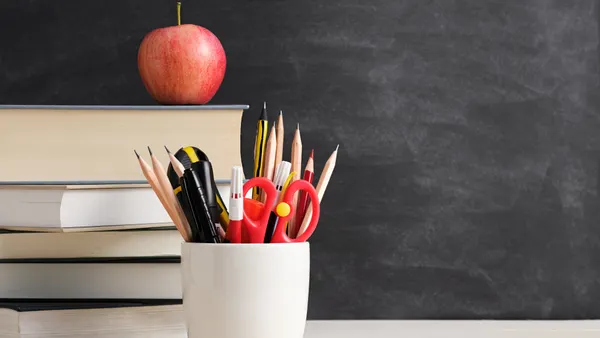Dive Brief:
-
In a narrowing of the achievement gap over the past nearly five decades, Black, Hispanic and Asian students showed more improvement than their White classmates in math and reading test results of over 7 million tests completed by U.S. students between 1971 and 2017, according to a study published Tuesday in research journal Education Next.
-
The Black-White test gap narrowed to about half the size observed at the start of the 50-year period, as did the Hispanic-White gap, confirmed Paul Peterson, one of the researchers who conducted the study. Overall, Asian students made the most significant improvement, gaining nearly two more years of growth in math and three more years in reading than White students.
-
The socioeconomic achievement gap, meanwhile, narrowed slightly by about a little over half a year's worth of learning. The biggest gains for lower-income students came in elementary school, where they gained 1.5 years in math and three years in reading. Still, the lowest-income students experienced a widening achievement gap over five decades when compared to the highest-income students.
Dive Insight:
The research included results from a variety of widely used national assessments, such as the National Assessment of Educational Progress and Long-Term Trend Assessment, as well as international assessments like the Program for International Student Assessment and Progress in International Reading Literacy Study.
Overall, results showed steeper gains in math, with nearly four additional years of learning over five decades, than in reading, where test scores demonstrated close to one year of additional reading growth over the same period.
However, the COVID-19 pandemic could negatively impact some of these improvements, experts say.
"These trends take us through 2017, and given the pandemic that has occurred since then, it is almost certain that student achievement has slipped recently," said Paul Peterson, a researcher on the study and director of the education policy and governance program at Harvard University’s Kennedy School of Government.
Learning lags brought on by school closures have been more pronounced for high-poverty schools that remained closed the longest, according to recent research. In fact, researcher Tom Kane, economist and professor of education at Harvard University who has studied the closures' impact on learning, said the closures could lead to a "dramatic reversal" of the 50-year trend observed by Peterson and could remain permanent if districts don't intervene aggressively enough.
"School districts need to have a much more realistic sense of what the catch-up is going to take," Kane said. In many cases, students at school districts that were remote for more than half the year during 2021, especially high-poverty ones, missed more than half a year of growth, he added.
"That's the scary part — is that in many districts, they're trying small-scale interventions rather than larger-scale interventions," Kane added. He estimates it will cost many, if not all, districts much more than the 20% of spending required by the American Rescue Plan for learning loss mitigation.
Factors constraining district efforts, Kane said, are the current labor market that has left many schools understaffed, and a lack of political will to make bigger changes like extending the school year or school day.
Despite these challenges, Kane suggested schools should already be thinking about programs for next summer.
"I don't see any district plans at this moment — especially [for] districts that were remote for half a year during 2021 — that are anywhere close to enough to allow students to catch up," Kane said. "I think we're going to discover that students will still be far behind at the end of this school year, and that we're going to need larger programs, especially in the districts that were closed for long periods during 2021."
This 50-year data comes on the heels of data released last week by the U.S. Department of Education that Education Secretary Miguel Cardona said showed "significant progress" despite staffing woes. That data showed a 14 percentage-point reduction in students that were behind grade level in at least one academic subject during the 2021-22 school year.
Peterson said the impact of COVID-19 on student achievement will be better understood by September, when NAEP is scheduled to release data on performance of 9-year-old students.










